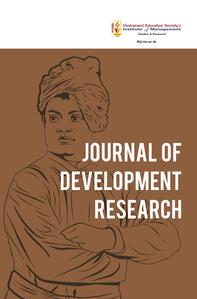
1 N. L. Dalmia Institute of Management Studies and Research, Mira Bhayandar, Maharashtra, India
2 Sheila Raheja School of Business Management and Research, Mumbai, Maharashtra, India
Creative Commons Non Commercial CC BY-NC: This article is distributed under the terms of the Creative Commons Attribution-NonCommercial 4.0 License (http://www. creativecommons.org/licenses/by-nc/4.0/) which permits non-Commercial use, reproduction and distribution of the work without further permission provided the original work is attributed.
COVID-19 has exposed the risks of complex and disconnected supply chain. Many businesses have realised that they need to reach a state of greater visibility and agility across their supply chain. This crisis has forced practical, agile thinking, giving the courage to test, fail fast and try again. Digital transformations that would have taken months or years are being done in a matter of weeks.
In view of the above perspective, this article first studies the various initiatives taken by companies to make their end-to-end supply chain resilient, agile and robust. Then it identifies various factors for a new age technology that are evident for new-normal supply chain management. Using New Rough Stepwise Weight Assessment Ratio Analysis (SWARA) approach, the factors are evaluated for most appropriate factor required for implementation.
New-normal, supply chain management, digital supply network, e-procurement, new age technologies
Boer, L. D., Harink, J., & Heijboer, G. (2002). A conceptual model for assessing the impact of electronic procurement. European Journal of Purchasing and Supply Management, 8, 25–33.
Carayannis, E. G. (2005). Profiling a methodology for economic growth and convergence: Learning from the EU e-procurement experience for central and eastern European countries. Technovation, 25, 1–14.
Chang, H. H., Chuan, Y., & Hsu, C. H. (2013). E-procurement and supply chain perfor- mance. Supply Chain Management: An International Journal, 18, 34–51.
Croxton, K. L., Dastugue, S. G., Lambert, D. M., & Rogers, D. (2001). The supply chain management processes. The International Journal of Logistics Management, 12, 13–36.
Dooley, K., & Purchase, S. (2006, March). Factors influencing e-procurement usage.
Journal of Public Procurement, 6, 28–45.
Holsapple, C. W., & Whinston, A. (1990). Business expert systems: Gaining a competitive edge. IEEE Xplore, 3, 249–256.
Ivanov, D., & Dolgui, A. (2020). Viability of intertwined supply networks: Extending the sup- ply chain resilience angles towards survivability. A Position Paper Motivated by COVID- 19 Outbreak. International Journal of Production Research, 58(10), 2904–2915.
Ketter, W., Collins, J., Gini, M., & Gupta, A. (2011). Real-time tactical and strategic sales management for intelligent agents guided by economic regimes. Information Systems Research, 23(4), 1263–1283.
Lee, C., Ho, W., Ho, G. T. S., & Lau, H. (2011). Design and development of logistics work- flow systems for demand management with RFID. Expert Systems with Applications, 38, 5428–5437.
Li, B., & Li, Y. (2017). Internet of things drives Supply Chain Innovation: A research framework. The International Journal of Organizational Innovation, 9(3), 71–92.
Machowiak, W. (2012). Risk management-unappreciated instrument of supply chain man- agement strategy. LogForum, 8(4), 277–285.
Min, S., & Mentzer, J. T. (2011). Developing and measuring supply chain management concepts. Journal of Business Logistics, 25(1), 63–99.
Moon, M. J. (2005). E-procurement management in state governments: Diffusion of e-pro- curement practices and its determinants. Journal of Public Procurement, 5, 54–72.
Olig, E., & Spears, G. (2001). Benefits of Internet-enabled procurement. Hospital Materiel Management Quarterly, 22, 42–46.
Peterson, S. P., & Flanagan, A. B. (2009). Neural Network Hedonic Pricing Models in Mass Real Estate Appraisal. Journal of Real Estate Research, 31, 147–164.
Randall, W. S., & Mello, J. E. (2012). Grounded theory: An Inductive method for sup- ply chain research. International Journal of Physical Distribution & Logistics Management, 42, 863–880.
Roy, V., Bruno, S. S., & Singh, S. (2020). Reactive and proactive pathways to sustain- able apparel supply chains: Manufacturer’s perspective on Stakeholder salience and organizational learning toward responsible management. International Journal of Production Economics, 227(1), 107672.
Seebacher, S., & Schüritz, R. (2017). Blockchain Technology as an Enabler of Service Systems: A Structured Literature Review. International Conference on Exploring Services Science, Springer, Cham. https://doi.org/10.1007/978-3-319-56925-3_2
Tan, K. C. (2001, March). A framework of supply chain management literature. European, Journal of Purchasing & Supply Management, 7, 39–48.
Taratoukhine, V., & Yadgarova, Y. (2018). Towards a socio-inspired multiagent approach for new generation of product life cycle management. Procedia Computer Science, 123, 479–487.
Vincent, A. M., & Venkataramanan, M. A. (2007). Special research focus on supply chain linkages: Challenges for design and management in the 21st century. Decision Sciences, 29, 537–552.
Vitasek, K., Manrodt, K., & Abbott, J. (2005). What makes a lean supply chain. Supply Chain Management Review, 9, 39–45.
Zavadskas, E. K., Stevic, Z., Tanackov, I., & Prentkovskis, O. (2018, March). A novel multicriteria approach – Rough Step-Wise Weight Assessment Ratio Analysis Method (R-SWARA) and its application in logistics. Studies in Informatics and Control, 27, 97–106.